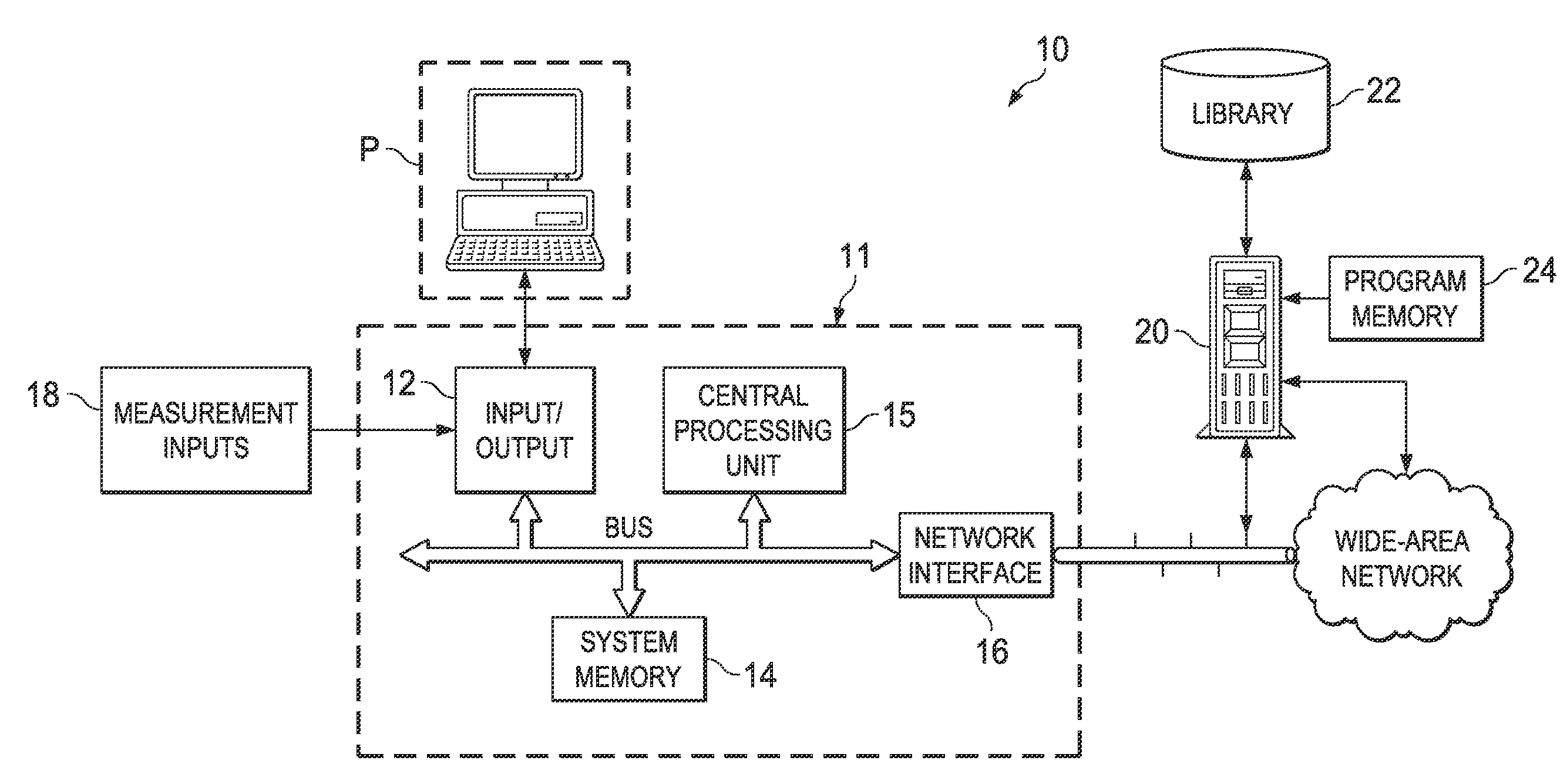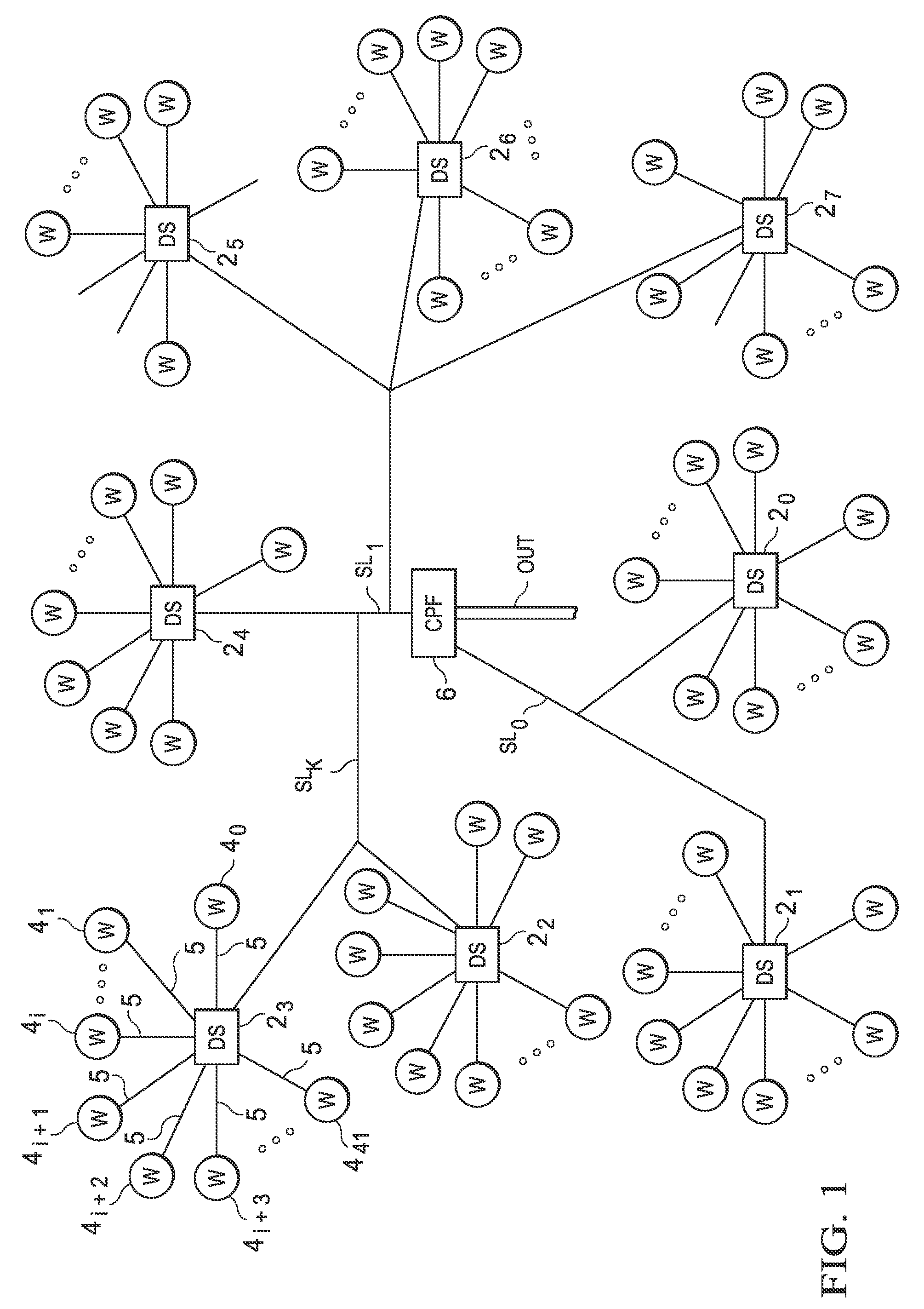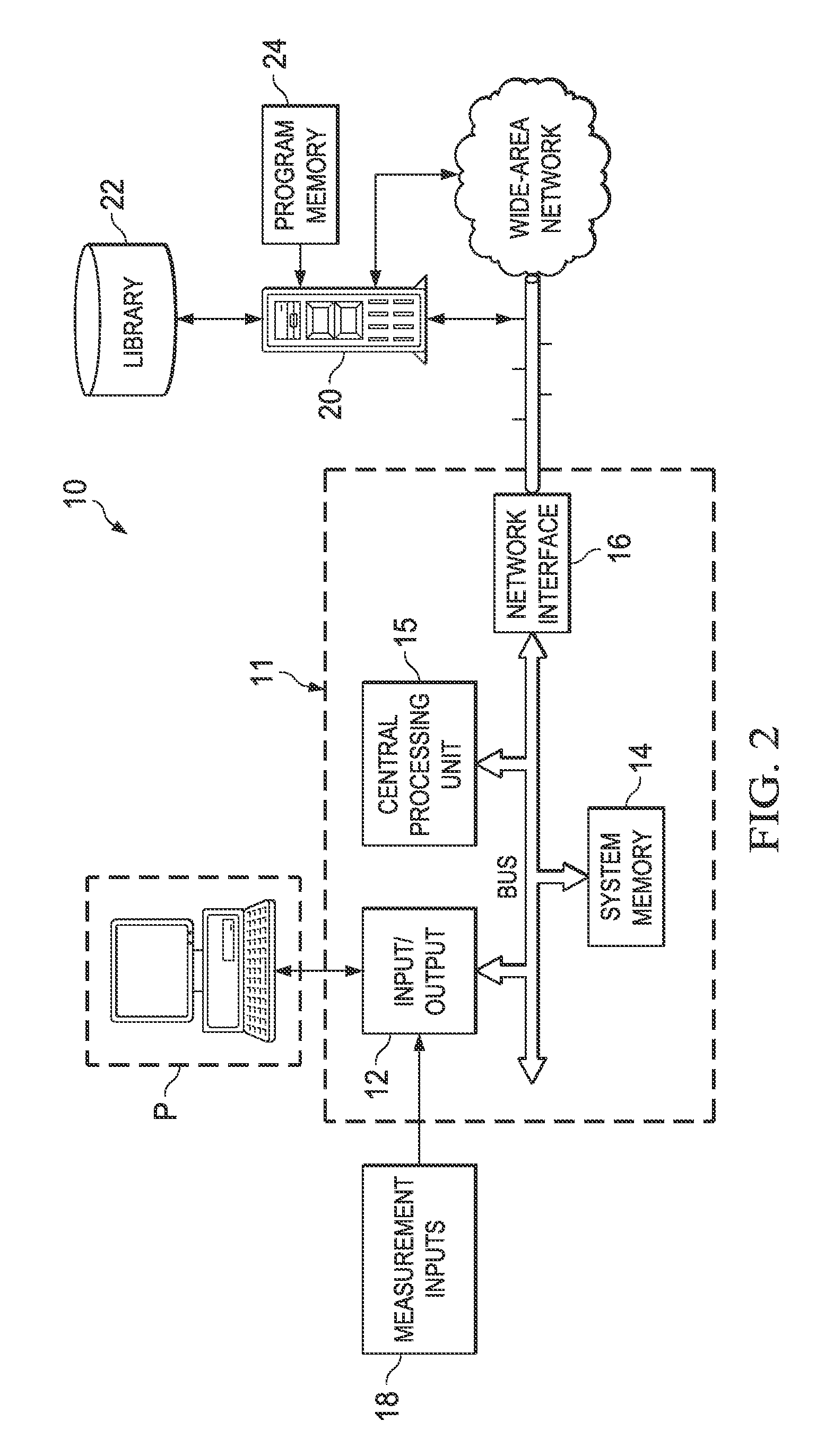Method and system for predicting corrosion rates using mechanistic models
a mechanistic model and corrosion rate technology, applied in the field of evaluation and maintenance of pipes, can solve the problems of corroding the pipeline, corroding and inability to maintain the pipe wall thickness loss constant and rigorously, if in fact possible, and the cosub>2/sub> that is dissolved into water is quite corrosiv
- Summary
- Abstract
- Description
- Claims
- Application Information
AI Technical Summary
Benefits of technology
Problems solved by technology
Method used
Image
Examples
Embodiment Construction
[0030]The present invention will be described in connection with its embodiments, one of which is described herein in connection with a method and system for predicting pipe corrosion rates. These embodiments will be described in this specification in the context of predicting pipeline corrosion rates in a production field and system for oil and gas, to assure the integrity of those pipelines and to facilitate efficient maintenance of the system, and in the context of predicting corrosion rates for metallic (e.g., carbon steel) downhole casing in oil and gas wells. However, it is contemplated that this invention can also provide important benefits in other applications, including, for example, pipeline corrosion rate prediction for other applications such as water and sewer systems, natural gas distribution systems on the customer side, and factory piping systems, to name a few. Accordingly, it is to be understood that the following description is provided by way of example only, an...
PUM
 Login to View More
Login to View More Abstract
Description
Claims
Application Information
 Login to View More
Login to View More - R&D
- Intellectual Property
- Life Sciences
- Materials
- Tech Scout
- Unparalleled Data Quality
- Higher Quality Content
- 60% Fewer Hallucinations
Browse by: Latest US Patents, China's latest patents, Technical Efficacy Thesaurus, Application Domain, Technology Topic, Popular Technical Reports.
© 2025 PatSnap. All rights reserved.Legal|Privacy policy|Modern Slavery Act Transparency Statement|Sitemap|About US| Contact US: help@patsnap.com



